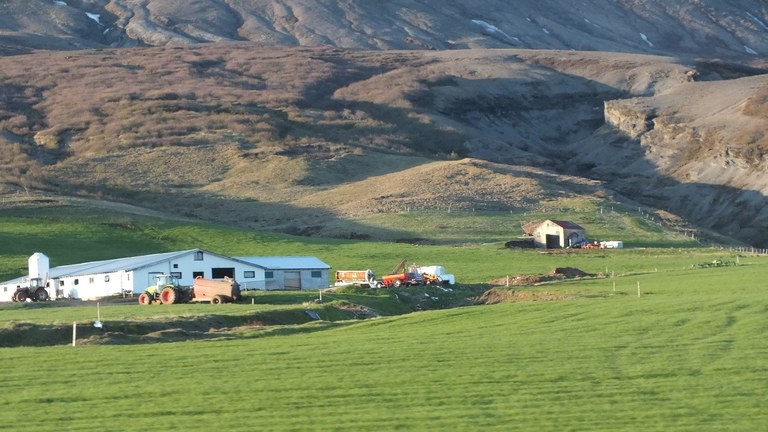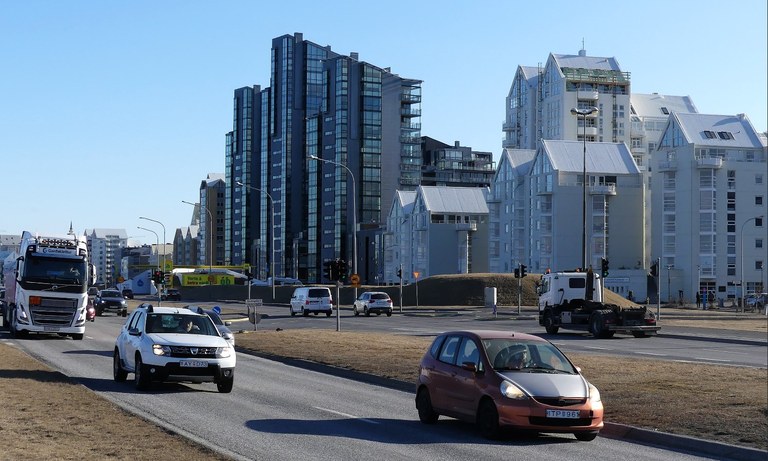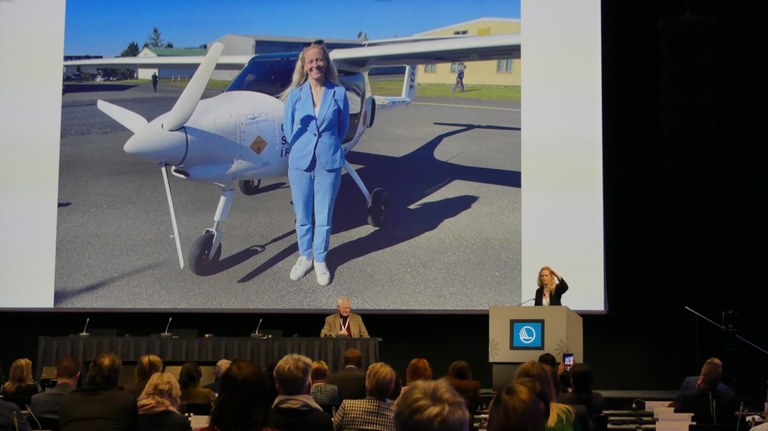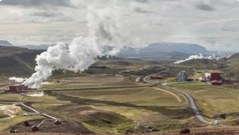Iceland: Just 15 per cent away from being a CO2 emission-free society
Iceland is likely to become the first completely carbon-neutral country in the world. In the current European energy price crisis, the country is an island of stability.
“The cost of heating up a house of about 130 square meters is some 65 dollars per month, and it has stayed that cheap because we have used local resources during the crisis,” says Halla Hrund Logadóttir, Director General of the National Energy Authority, Orkustofnun.
Iceland is special in many ways when it comes to energy. 99 per cent of the country’s electricity comes from renewables. 80 per cent of primary energy is consumed by industry, mainly aluminium smelters. Other industry plus heating consume 5 per cent while transport – cars, ships and planes – consume the remaining 15 per cent.
"9 out of 10 houses in Iceland are heated by geothermal power,” Logadóttir tells an audience of Nordic parliamentarians who have gathered in Reykjavik to discuss energy security during a special session of the Nordic council.
“That is also the case here in Harpa where we are now,” she says.

The Harpa opera house in Reykjavik.
The Harpa opera house is something all Icelanders are proud of. It was the only building project which kept going during the financial crisis of 2008, which hit Iceland extremely hard.
Lying at the harbour with a facade designed by artist Ólafur Elíasson together with the architects, Harpan reflects the glittering colours of the sea like the scales on a fish. The air in Reykjavik is clear and crisp, but it was not always like that, explains Logadóttir. She shows a picture of Iceland in 1918 when the main source of heating was coal and a dark cloud of smoke often hovered over Reykjavik.
“This is a picture of Reykjavik in the early nineteen-hundreds, and you can see the difference in comparison with what we have today on a sunny day. The main difference is the geothermal district heating system. My favourite part of the story is that it very much started with entrepreneurship,” says Halla Hrund Logadóttir.
“In this case farmers finding a way to connect their houses to hot springs. That was scaled up by municipalities, and eventually, it became a national policy issue. It started small. Like any big journey. It started with the main public school in Reykjavik and the hospital that were heated with geothermal energy. And from these small success stories, the journey took off.
“It became a voting issue and a political debate already in 1938. Then it was about the environment in the context of clean air, it was ‘vote for geothermal, vote for clean air’, but it was also related to energy security.”

It all started with Icelandic farmers finding a way to use the hot water from Iceland's hot springs to heat their buildings.
According to Halla Hrund Logadóttir, 30 years later, during the energy crisis of the 1970s, energy security was the driving force behind Iceland’s infrastructure investments that it still relies on today.
“It was very expensive for Iceland to import fossil fuels. In that timeframe, the government made very brave policy decisions, which have helped us during the energy crisis we see today in Europe.
“Some people may think that it wasn’t difficult since we have these volcanoes. Of course, we have access to these resources, but it was a very difficult task. There is a path in Reykjavik that I walk along on my way to work. It follows the ditch where the first pipes transporting hot water were laid.
“And I often think, wow! People made this happen even if they didn’t really have the skills. They just went ahead and tested it out and it worked.
“And there was another brave element, the Icelandic Energy Fund, which still operates today, and it funded this geothermal investment journey. From 1961 to 1983, more than 300 district heating systems were built over the whole of Iceland, which keep our houses warm.
“The energy fund continues to play its role. Right now we are about to close the final 15 per cent to becoming a CO2 emission-free society. We are talking about transportation, aviation, and shipping,” says Logadóttir.
For transportation the technology is ready, she says. It is just a matter of implementation. In aviation, even if many things have happened, there are still steps that must be taken on a global scale, and that also goes for shipping as well.

Icelandic roads can be congested too in the rush hour. Seven per cent of all cars are now fully electric.
Halla Hrund Logadóttir showed graphs of how the share of electric vehicles has grown in the same way as in Norway, only a few years later.
“If we compare ourselves with our friends in Norway, you can see that they are doing even better. We are number two in this field. Fully electric cars make up seven per cent of all cars in Iceland and around 20 per cent in Norway.
“We have no excuses in Iceland for not taking bigger steps. Our Minister of Energy has focused a lot on addressing this issue, for example by providing support for car rental companies. They import a lot of cars to Iceland, so focusing on them is important.”
She then showed a picture of the first electric plane to arrive in Iceland.

Halla Hrund Logadóttir shows a picture of herself and the first electric plane brought to Iceland.
“Imagine this, you can just plug it in like your hair dryer and fly away! Iceland is well-placed for using electric planes on domestic flights. There are issues that we need to deal with, but the technology is there.”
One of the main challenges for closing the remaining 15 per cent is getting public support for infrastructure investments. In this respect, Iceland faces the same challenges as its Nordic neighbours. This is outlined in a recent government report, “The complexity of the regulatory framework and the time-consuming permission process have delayed developments within the energy network.”
“My key message today is that the current crisis is an infrastructure crisis. The infrastructure we invest in today is something we might not see the fruits of tomorrow. But it is the infrastructure that future generations will rely on, not necessarily in this energy crisis, but in the future ones to come.”
- Read more:
-
How Iceland's industry benefits from being outside of the common energy market

 Follow us on Facebook
Follow us on Facebook
